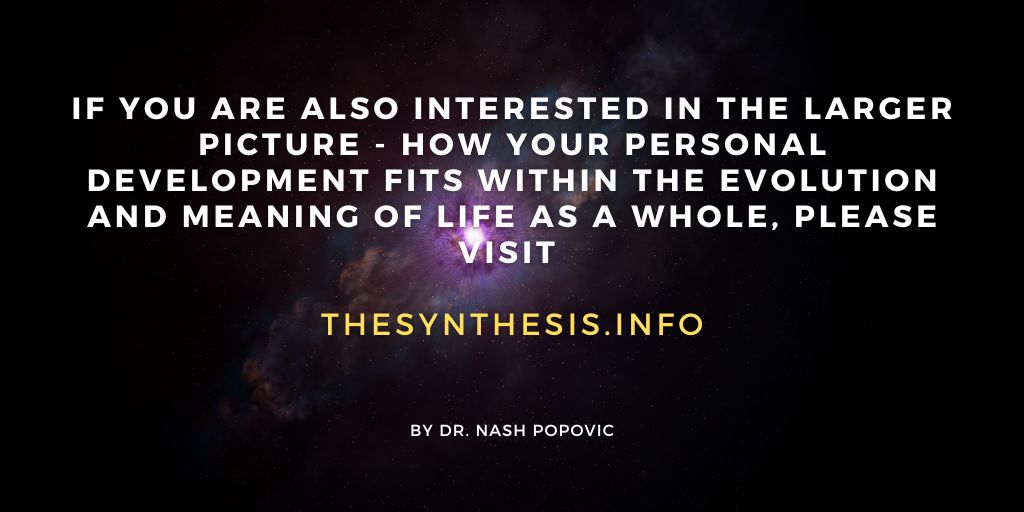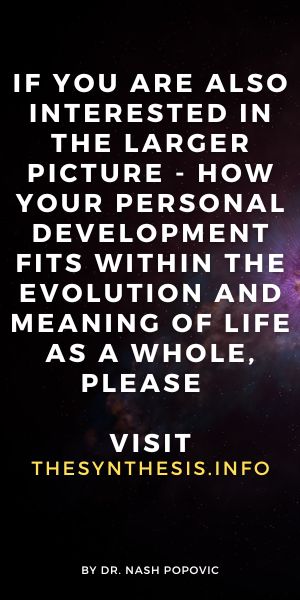13. Harmonisation
Whether we are happy depends on inner harmony, not on the controls we are able to exert over the great forces of the universe.
M. Csikszentmihalyi (a founder of Positive Psychology)
Itmonisation is the process of integrating various aspects of oneself. Essential to this is an ability to deal with inner conflicts. There is profound awareness that inner conflicts can have serious consequences (Shakespeare’s Hamlet or Stevenson’s Doctor Jekyll and Mr Hyde are well known examples in literature) [1]. So this area will mainly focus on resolving them.
Problems and inner conflicts
Problems are usually visible, inner conflicts are usually not. Problems become conflicts when they are internalised. For example, a problem with an abusive boss is out there, but it can create an inner conflict between your need for financial security and your need to maintain your dignity. This may be triggered by but is not the same as the conflict with your boss – it is a conflict between two aspects of yourself. Whatever problem you have you are likely to deal with it better if you resolve your inner conflict first – otherwise you are fighting on two fronts at the same time!
The secret of happiness?
It is practically impossible to avoid conflicts, but if left unresolved, they make us vulnerable and may even affect our mental health. Without a relatively coherent self, it is difficult to function well as you are pulled in different directions. Personal integration and harmony, on the other hand, create a sense of contentment; it was found that ‘people are happier if they have managed to resolve their inner conflicts, and achieve some degree of integration of their personality.’ [2] This suggests that, unlike pleasure or satisfaction that depend more on external stimulation and outside events (e.g. agreeable stimuli, success, recognition etc.), happiness ensues from our internal state (‘peace of mind’). So, let’s look more closely at how we can resolve inner conflicts.
Tactics for dealing with conflicts
Unattended inner conflicts tend to fester, so the first step in resolving them is recognising that there is one. Stop for a moment and look inside: do you feel that some parts of you are at loggerheads or that you are pulled in different directions? If so, you have an inner conflict. There are two major tactics to deal with it: distributive and integrative.
Distributive tactics are mainly concerned with the outcome rather than an inner state. These are two such tactics:
- Taking one side and dismissing or fighting the other. This tactic may be useful if the reason for the conflict is unimportant or there is little time to deal with it; also if one side is demonstrably stupid or distractive (e.g. you get angry at work, and a part of you wants to hit your boss or get very drunk).
- Separating the sides in the conflict: if there is no point of contact between them, a conflict may not be experienced. For example, as a neuroscientist, you can take a secular position in your professional life (Monday to Friday) and take a religious one in your private life (on Sundays). The conflict is still there, but you may not be bothered by it (at least not on the surface) as long as these domains are kept separate.
These tactics have a place, but they don’t lead to full integration and need continual reinforcement and attention (in other words, you need a mind controller to keep the conflicting sides in check).
Integrative tactics may require more effort, but they can help you reconcile opposing sides and bring peace of mind. They consist of:
-
Acknowledging both sides of the conflict and then negotiating, looking for common ground, a way that can be acceptable for both. If we take again our neuroscientist example, you can give up on the notion of the soul but still retain your belief in God.
-
Digging deeper by reflecting on underlying beliefs, values and assumptions and setting priorities on that basis. This may take time but may eliminate the conflict entirely and for good (‘what are my secular and religious beliefs based on?’).
A win-win strategy for resolving inner conflicts
This strategy utilises integrative tactics in resolving an inner conflict and can contribute to a harmonious relationship to yourself. Let’s take a simple conflict as an example: you don’t feel like going out, but you promised your friend that you would.
- Listen to opposing sides of the conflict and acknowledge the possible consequences (‘I really want to rest, I hate being sleepy at work…’; ‘I will feel bad if I let my friend down…’). Letting the different ‘voices’ within you to air what they want may reduce conflict, even if their demands are not met:
Empty chair: put two chairs facing each other. Sit in one of them and express the views of one side of the conflict as if the other side is sitting in the empty chair. Then move to that chair and express the views of the other side of the conflict. It may help if each side acknowledges the other by summarising what has been said before responding. Alternate between the chairs as many times as necessary. If a resolution is not reached, stand up and observe both chairs. What do you think or feel when you do so?
- If the above doesn’t help, clarify what is important for each side and put it together in one sentence (e.g. ‘not let my friend down and not feel tired tomorrow’). Look for an acceptable solution for both sides (‘I could invite him here’, ‘I can have some rest first, and meet him later’, ‘I could come back early’ etc.).
- If this doesn’t work either, check your assumptions (‘Will John really get upset if I don’t meet up with him?’), consider underlying values (‘What is more important for me, being on good form at work or keeping promises to friends?’) and prioritise on that basis.
All of the above deal with conflicts that relate to a present or future situation. There is, however, another kind of quite common conflict that is worth addressing: this one relates to the past.
Regret
Regret is different from guilt as it doesn’t need to relate to some norms (e.g. you may choose a relationship or profession and regret it later). It is a result of a conflict between past actions and the present state. Such a conflict can be quite daunting and painful because we cannot go back in time and change things. What we can do though is examine its validity.
As Alex Lickerman puts it, regret is premised on the notion that if only we had chosen a different path from the one we actually did, our life wouldn’t have just turned out differently, but better. We tend to idealise the road not taken, imagining only the good things and leaving out other stuff as well as all the consequences. In fact, whatever you feel about your life now, confidence that some other choice would have been necessarily better is unjustified. That other life almost certainly wouldn’t have turned out the way you imagine it. You can’t know what challenges you would’ve faced in that scenario and you can’t be sure that your life is actually not better now as it is. If you are prone to regrets, it is entirely possible that on that other path you would’ve regretted not choosing the one you are now on! And even if some things would’ve been better, others may not (e.g. you may now have a greater opportunity to grow). Besides, whatever path you have chosen, you would have taken yourself on it. All your insecurities, behavioural quirks, and insufficiencies would come with you. They would’ve been challenged there too and if not, you wouldn’t have been developing at all! So, as the only possible use of regret is to initiate an action, do something about it if you can or want; otherwise, get rid of such a conflict. This may help you to do so:
- Rather than letting yourself wallow in suffering over what might have been, remind yourself the grass only seems greener: it is not fair to compare reality with an idealised alternative.
- Make peace with yourself – remember that you had to make a choice without the hindsight you have now.
- Count your blessings – who knows why it is good that you are on this rather than any other path?
- Resolve to make what you have now the best it can be as, if you mess it up, you may have even greater regrets.
(1) In non-fiction, see, for example, still relevant Horney, K. (1945) Our Inner Conflicts.
(2) Argyle, M. (1987) The Psychology of Happiness. London: Methuen, p.116.

